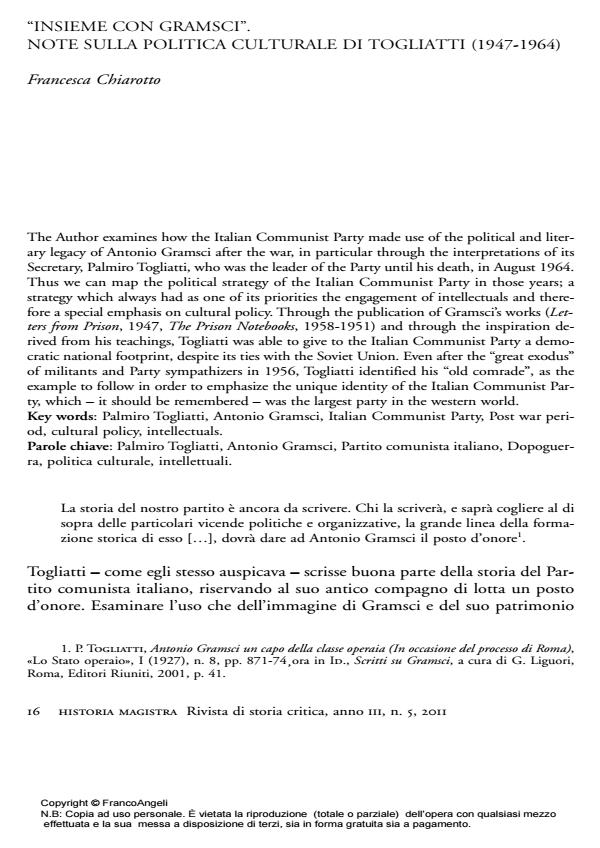"Insieme con Gramsci". Note sulla politica culturale di Togliatti (1947-1964)
Journal title HISTORIA MAGISTRA
Author/s Francesca Chiarotto
Publishing Year 2011 Issue 2011/5
Language Italian Pages 11 P. 16-26 File size 316 KB
DOI 10.3280/HM2011-005003
DOI is like a bar code for intellectual property: to have more infomation
click here
Below, you can see the article first page
If you want to buy this article in PDF format, you can do it, following the instructions to buy download credits

FrancoAngeli is member of Publishers International Linking Association, Inc (PILA), a not-for-profit association which run the CrossRef service enabling links to and from online scholarly content.
The Author examines how the Italian Communist Party made use of the political and literary legacy of Antonio Gramsci after the war, in particular through the interpretations of its Secretary, Palmiro Togliatti, who was the leader of the Party until his death, in August 1964. Thus we can map the political strategy of the Italian Communist Party in those years; a strategy which always had as one of its priorities the engagement of intellectuals and therefore a special emphasis on cultural policy. Through the publication of Gramsci’s works (Letters from Prison, 1947, The Prison Notebooks, 1958-1951) and through the inspiration derived from his teachings, Togliatti was able to give to the Italian Communist Party a democratic national footprint, despite its ties with the Soviet Union. Even after the "great exodus" of militants and Party sympathizers in 1956, Togliatti identified his "old comrade", as the example to follow in order to emphasize the unique identity of the Italian Communist Party, which - it should be remembered - was the largest party in the western world.
Keywords: Palmiro Togliatti, Antonio Gramsci, Italian Communist Party, Post war period, cultural policy, intellectuals
Francesca Chiarotto, "Insieme con Gramsci". Note sulla politica culturale di Togliatti (1947-1964) in "HISTORIA MAGISTRA" 5/2011, pp 16-26, DOI: 10.3280/HM2011-005003